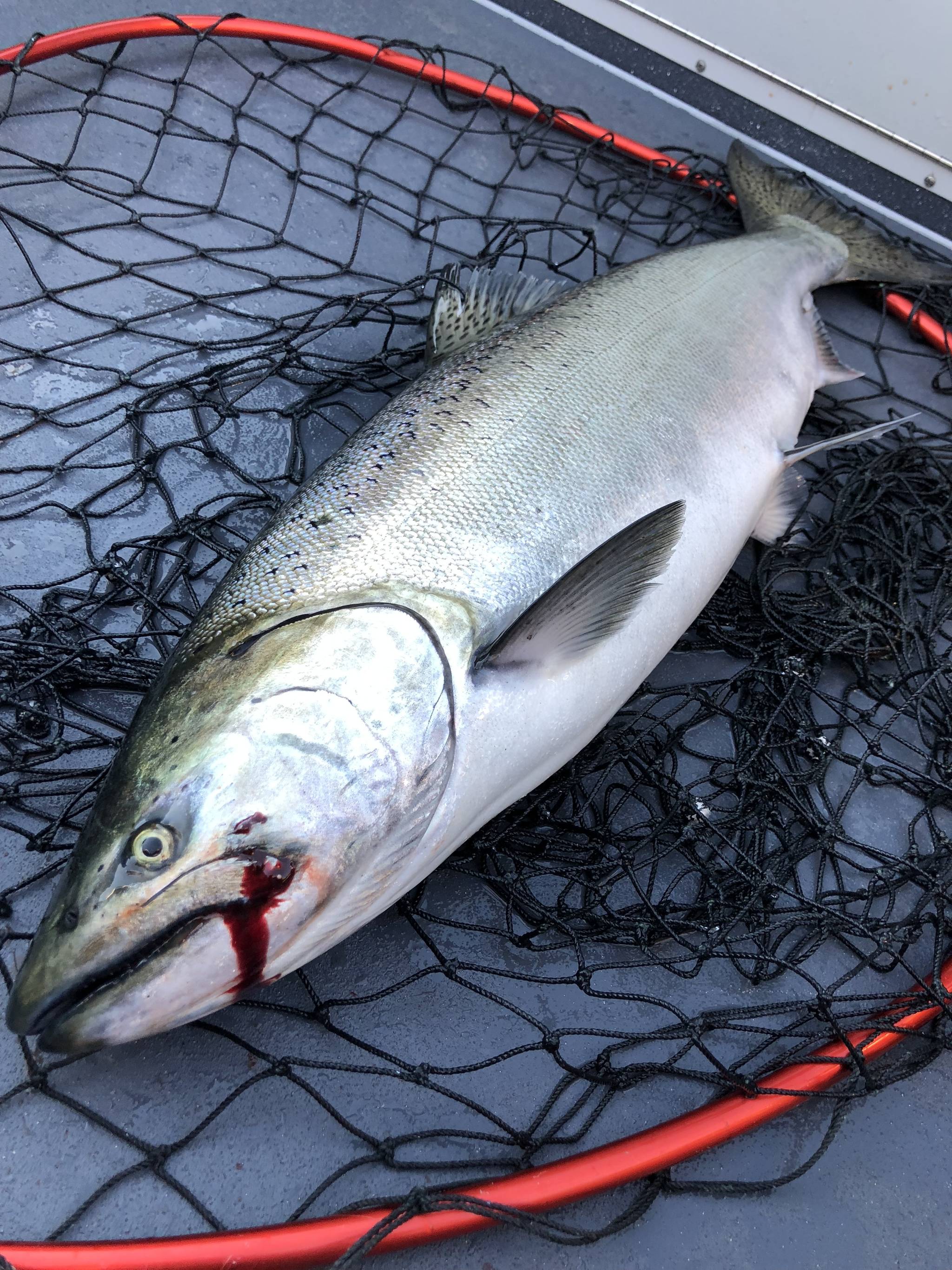Calling all salmon anglers. Local scientists need your Chinook salmon guts to learn more about differences between the diets of summer Kings and winter Blackmouth.
“We need to protect the prey base for both sea-run and resident Chinook,” said Russel Barsh, Kwiaht director and one of the participating scientists. “If they don’t have enough to eat, they’ll be nothing to catch.”
Chinook compete with seabirds, marine mammals, and people for prey such as herring that have also declined for decades.
“It is unclear how adaptive adult Chinook can be when they cannot find favorite foods,” Barsh said. “What’s their second choice, their third or their fourth? At what point do they starve, like Southern resident killer whales appear to do when they can’t find enough adult Chinook to eat?”
Resident Chinook salmon – Blackmouth – are the focus of a collaborative study involving Lopez-based nonprofit laboratory Kwiaht as well as scientists at the National Oceanic and Atmospheric Association, the state Department of Fish and Wildlife and Long Live the Kings.
With the help of local anglers, including contestants in local derbies, researchers were able to see what Blackmouth were eating in different parts of the San Juan Islands over the course of the winter fishing season. Herring was the clear favorite but many other things were found in Blackmouth stomachs, including Pacific Sand Lance and several kinds of shrimp. The study of winter diet will continue for two more years before it develops into a long-term diet-monitoring program run by anglers themselves.
Do summer Kings target the same prey as winter Blackmouth?
“Herring for certain,” said Barsh, “but what’s on the backup menu, and how is that changing as the Salish Sea and its climate change?”
The roles of squid and shrimp in the Chinook diet appear to be seasonal, for example; whereas the importance of sand lance varies greatly from year to year.
Researchers also want to know which herring stocks are targeted by Chinook at different times of the year. Recent studies by Tessa Francis and Eleni Petrou at the University of Washington indicate that sub-regional stocks of Salish Sea herring differ in where and when they spawn.
“We used to think that Cherry Point herring were the only distinct regional stock,” Barsh said, “but it seems that previous genetic studies simply had not looked closely enough at herring diversity.”
In San Juan County, he added, we are probably most affected by Gulf Islands herring.
“So please save those Chinook gut contents for us this summer!” Barsh said. Gut contents can be frozen in a ziplock bag, with information on the general location (such as “west side of San Juan”) and date the salmon was caught. For information on drop off or pickup locations, email info@kwiaht.com. And if you’re on San Juan Island, come to hear Kwiaht director Russel Barsh talk about “the secret life of Blackmouth” on July 18, 7 p.m., at the library in Friday Harbor.



